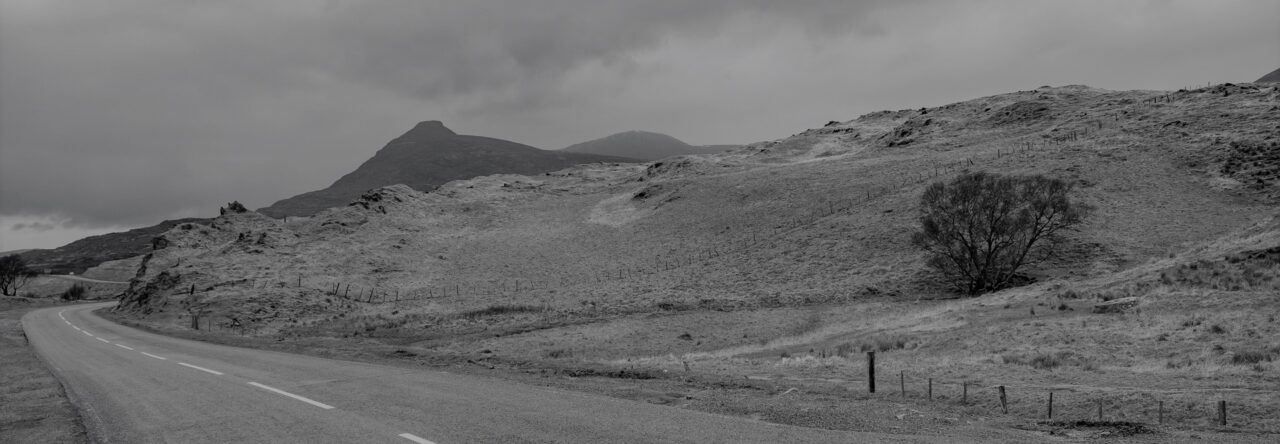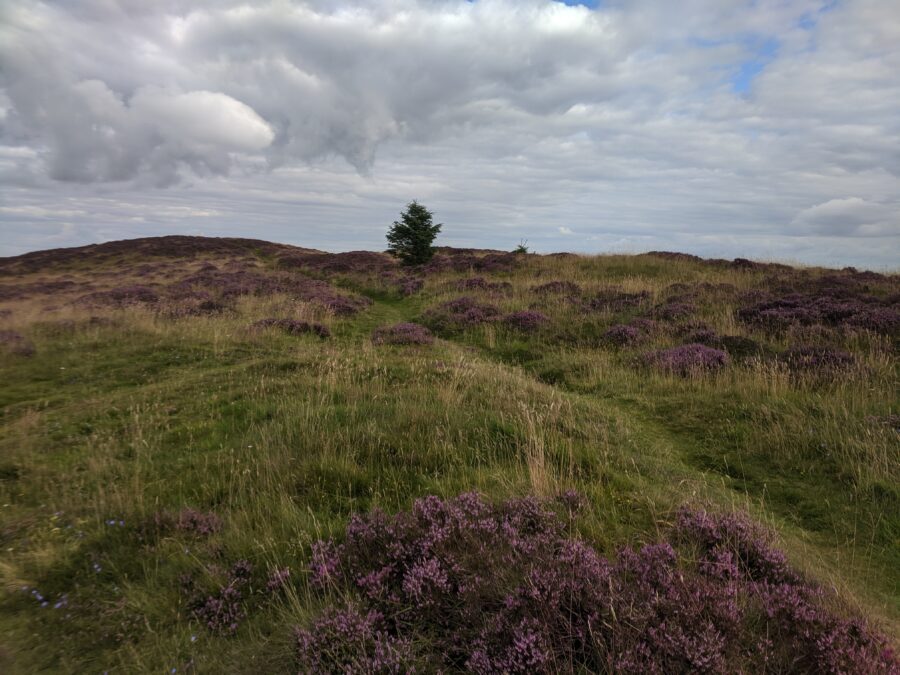While exploring creative methodologies for approaching and understanding suicide, I came across a documentary film called ‘Evelyn’[1]. The documentary follows the filmmaker, Orlando von Einsiedel, and his family as they spend five weeks walking in various scenic locations across the UK and talking about their brother, the eponymous Evelyn, who died by suicide 13 years prior.
The feature-length film provides a glimpse into one way in which art and landscape are used to work through grief, as well as raising questions about the experience of grieving a loved one who has died by suicide. How stories of suicide are built in art can indicate to what extent loved ones reflect common societal conceptualisations of suicide – arguably one way in which culture can impact on individual life stories. However, there is also room to demonstrate how families may ‘move beyond’ accepted narratives – for example, in public grieving and its impact in dispelling stigmas around suicide.
The director, as a professional filmmaker – the artist – and subject of the film, used his changeable roles in the project as a way at first to avoid talking about his own emotions to his family. This was raised by other participants and slowly worked through during the film, leading von Einsiedel to open up a bit more about his grief. This is interesting, as it indicates that while the assumption is that making art can be cathartic, it may also provide spaces to ‘hide’ from feelings. (Which is not necessarily negative but is an important point to note if the intention of arts-based working is therapeutic.) The filmmaker’s desire to hide, in part due to his position as the eldest brother and perception of his need to be strong for his siblings, also highlights that the loved ones of an individual who has died by suicide will experience their bereavement through the prism of their own positionality.
The film moves between different perspectives, highlighting how different experiences of grief (and engagement with the film-making project) may reflect a particular person’s social position – ultimately impacting the stories they tell. It also focuses on conversations between people who knew Evelyn – engaging in a process of building narratives about a loved one, which may evolve in the telling and in the adding from other perspectives. Importantly, some family members’ memories and experiences contradict one another, leading to moments of conflict in the film. The film attempts to share with the viewer a sense of who Evelyn was as a person. For me though, this also raises caution around interpreting these stories as ‘truths’ about him – Evelyn is no longer able to affect how his loved ones interpret his life, embodiment, and story. To the film’s credit, leaving some conflict in the film underlines the subjectivity of ‘knowing’ a person through our relationship(s) with them.
Absence-presence, landscape, and grieving through place
The film involves a great deal of movement and a sense of attachment to place. The family members retrace walks they had done with Evelyn and revisit the memories both stored and unlocked in place. Landscape – places of memory and importance to the individual – offers an interesting suggestion for a methodology that enables bereaved family members to engage with places that were important to them and their deceased loved one, and that impacted their relationships. Research methods that can embrace this place-centredness and mobility may ‘unlock’ different perspectives, expand understandings of a person through connecting with places special to them, and embed memories in materiality. (See for example the work of Maddrell[2] in exploring absence-presence and place in grieving.)
While they walk, the family members begin to open up to strangers they meet who ask what they are doing – spurred to curiosity by the presence of the filming equipment. Throughout the course of the film, we watch the family members become increasingly comfortable with talking about Evelyn and suicide with those outside of their group. The story of the film shows viewers this process of emerging from an idea of suicide as a stigmatised, shameful topic that is not spoken about, and how the film, as an expression of mourning and healing, moves across the spectrum of the public-private. The film depicts interactions with other people who have lost individuals to suicide, clearly making an argument for the universality of this type of grief and expressing an opinion about the power of talking about it through the positive reactions from others with whom they engage. In this way, the film ultimately finds its thesis point, that silence about suicide is harmful, both within a public and a private context.
The film seems to present this point as somewhat deviant and/or revelatory, which is an interesting perspective given the prevalence of ‘talking about it’ as a major aspect of suicide prevention narratives and strategies. As a piece of art that reflects, creates, and comments on culture, the film’s sense of its own deviance draws together the various themes of the piece and raises questions about suicide culture(s) in the UK, outside of a policymaking/prevention/research setting. The film’s deviant mood may be a reflection of the filmmaker himself, and the evolution of his own ability and desire to talk about Evelyn’s suicide as the film progresses. Through his journey, the viewer understands how difficult it can be to actually practice ‘talking’ about suicide – and the ways in which this may be tied into ideals of stoic masculinity in the director’s need to take care of his siblings. This take on the filmmaker’s identity also reflects the focus on masculinity and emotional expression in research on men’s suicide – though less often on men’s grief. (For an example of work that has focused on men’s grief, see Creighton et al.[3]) At the same time, this journey reflects change over time, and a change to the way the filmmaker but also broader society has approached suicide over the past thirteen years, suggesting momentum and improvement – a cultural shift, perhaps – around talking about suicide.
The sense of deviance at the end of the film also draws on the spaces in which we feel we can talk about suicide. Part of the film’s actual deviant action may be that the travellers spoke about suicide somewhat randomly, with strangers, in open, beautiful spaces – and with less hesitation as the film progresses. This in itself does feel somewhat deviant and reminds me of my (on-going) journey in being open to telling people that I research suicide when they ask what I do. As a culture, we are increasingly in agreement that we should talk about suicide, but there may still be barriers to where, when, and how we feel it is appropriate to have these conversations; should we only talk about suicide in proscribed mental health, death, and suicide-related spaces? The film says no, portraying these conversations as powerful, insightful, and relatable. It suggests a continuation of the emerging changes to talking about suicide the more people are willing to open up and within a greater variety of spaces.
[1] Evelyn (2018). https://www.evelynmovie.com.
[2] Maddrell, A. (2013). Living with the deceased: absence, presence and absence-presence. Cultural Geographies, 20(4), pp. 501-522
[3] Creighton, G., Oliffe, J.L., Butterwick, S. and Saewyc, E. (2013). After the death of a friend: young men’s grief and masculine identities. Social Science & Medicine, 84, pp. 35-43.


